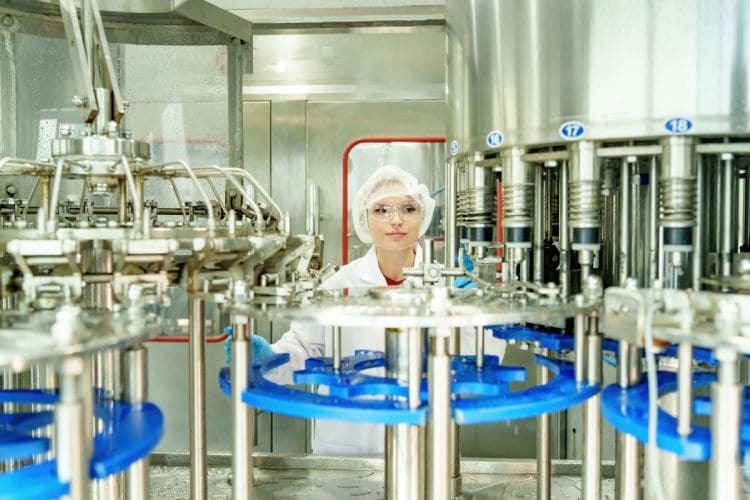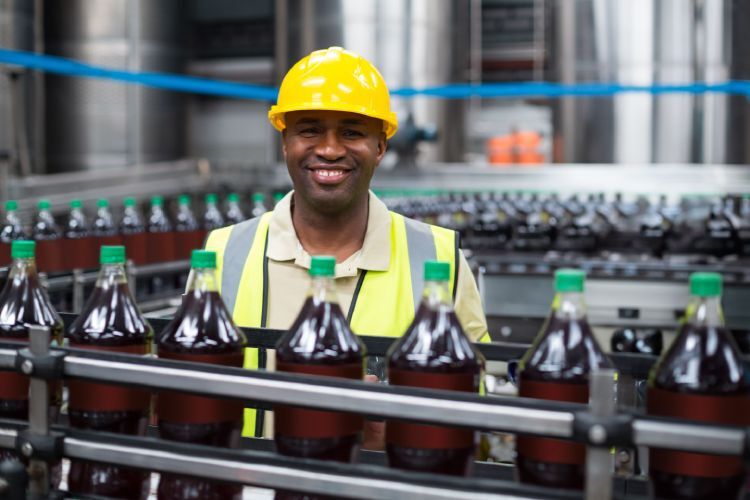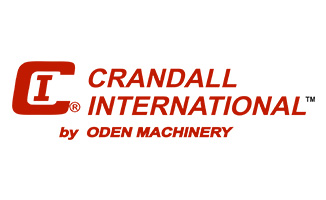
From bottled water and fruit juices to shampoos, lotions, and industrial chemicals, millions of products reach consumers through a common step: the liquid filling process. Getting this stage right is essential—not just for efficiency but for customer trust, product consistency, and brand reputation. The difference between a smooth, accurate fill and one plagued by spills, foam, or underfilled containers can mean the difference between profit and loss.
Liquid filling machines sit at the center of modern production lines, quietly determining throughput, quality, and compliance. Understanding how these machines work, their various designs, and what makes each suitable for different products is key for any manufacturer planning to scale operations.
What Is a Liquid Filling Machine?
A liquid filling machine is designed to dispense a measured amount of liquid into a container.
This seemingly straightforward task requires precision engineering to deliver speed, repeatability, and hygiene. In practice, filling involves managing fluid dynamics, container variability, product viscosity, foaming, and sanitation—all at production speeds.
A typical liquid filling machine integrates several components to make this process possible:
- Reservoir or product tank: Stores the liquid before filling
- Metering system: Determines how much liquid enters each container (using pumps, pistons, scales, or timed valves)
- Nozzles and valves: Control flow into the container, often designed to minimize dripping, splashing, or foaming
- Controls and automation systems: Programmable logic controllers (PLCs), servo motors, and touchscreens coordinate precision fills and provide recipe management
- Container handling systems: Conveyors, indexing wheels, or rotary turrets align and move bottles beneath filling nozzles
Beyond the mechanics, liquid filling machines play a strategic role in manufacturing. They reduce manual labor, improve consistency across thousands of units, and help companies comply with industry standards.
Key Benefits of Liquid Filling Machines
Modern liquid filling machines deliver more than speed. They transform how businesses approach packaging by improving accuracy, maintaining hygiene, and allowing for long-term scalability.
Higher Throughput & Scalability
Automated fillers can be configured with multiple heads, which dramatically increases output compared to manual or semi-automatic methods. This scalability allows companies to expand production without proportionally adding labor, creating a path for future growth.
Improved Hygiene & Product Safety
In industries like food, beverage, and pharmaceuticals, maintaining sterile conditions safeguards both consumers and brand reputation. Fillers for these industries are designed with hygiene and safety in mind. For example, closed systems, clean-in-place (CIP) and sterilize-in-place (SIP) capabilities, and carefully selected contact materials reduce contamination risks.
Consistency & Product Quality
By using precise metering technologies, fillers produce uniform fills across every container. This reliability builds consumer confidence, reduces costly returns, and helps avoid regulatory penalties.
Regulatory Compliance & Traceability
Many fillers include data recording features that capture batch numbers, weights, and timestamps. These records simplify audits, support regulatory requirements, and create traceable documentation for every production run.
Cost Efficiency & Reduced Waste
Accurate dosing minimizes overfill and spillage, directly cutting product waste. Over time, these savings accumulate, strengthening return on investment (ROI) and improving profitability.
Long-Term Reliability & Integration
Well-built liquid filling systems operate continuously with minimal downtime. Their ability to integrate smoothly with conveyors, cappers, and labeling equipment helps maintain steady production and reliable performance across the entire production and packaging line.
9 Common Types of Liquid Filling Machines
Liquid filling technology is not one-size-fits-all. Each machine type uses a distinct principle, making it better suited for specific liquids and production environments. With these differences in mind, manufacturers can more easily match equipment with their products’ physical characteristics and their production goals.
1. Pump Fillers
Pump fillers rely on positive-displacement pumps—gear, rotary lobe, or diaphragm types—to move product from a reservoir into containers. By precisely controlling pump revolutions, the system can deliver accurate volumes regardless of product viscosity. This process makes pump fillers especially versatile, capable of handling thin liquids like oils as well as heavy, viscous substances like honey or creams. Their adaptability extends further: Servo-driven pumps allow operators to program variable flow rates, delivering smooth fills even with shear-sensitive products.
One of the major advantages of pump fillers is their flexibility across different viscosities and container sizes. They also integrate well into CIP systems, making them suitable for sanitary environments. However, pump selection is critical; abrasive or corrosive products may demand specialized pump materials, and maintenance requirements increase with wear on moving parts.
2. Peristaltic Pump Fillers
Peristaltic pump fillers use rotating rollers to compress flexible tubing and push liquid forward. Since the product only touches the disposable tubing, cross-contamination is virtually eliminated, which makes them highly valued in pharmaceuticals, biotech, and cosmetics where sterile handling is critical. Changeovers are remarkably fast, as operators simply replace the tubing and are ready for a new product.
These fillers excel at small-dose applications where hygiene outweighs speed. Their limitations lie in throughput: The tubing can’t sustain very high flow rates for large fills, and it wears out over time. Still, for sterile environments or short runs of high-value products, peristaltic fillers remain unmatched.
3. Piston Fillers
Piston fillers operate on a volumetric principle, drawing liquid into a cylinder as the piston retracts, then pushing it out into a container as the piston advances. This design excels at handling thick, viscous products such as peanut butter, pastes, or sauces with particulates. The piston chamber accommodates chunks and particulates that would clog other systems.
These machines deliver exceptional accuracy and durability, making them ideal for medium-to-high viscosity applications. The trade-off is changeover time; pistons require careful cleaning and maintenance to avoid residue buildup, which can slow transitions between products. However, for operations where viscous products dominate, piston fillers remain a proven, reliable choice.
4. Gravity Fillers
Gravity fillers use timed valves that allow liquid to flow freely from a tank into containers, relying solely on gravity. They are most effective with low-viscosity, non-foaming liquids such as water, solvents, or juices. The simplicity of the design means fewer moving parts, lower costs, and easier maintenance.
These fillers can struggle with accuracy when dealing with density or temperature fluctuations, and they are generally slower than pump or piston fillers. But overall, their low cost and ease of use make them a popular choice for straightforward applications where precision is less critical.
5. Time-Pressure Fillers
Time-pressure liquid filling systems combine elements of gravity and pump fillers. By pressurizing the product tank, liquid is forced through nozzles for a set period, with time correlating to volume. These machines are faster than gravity fillers and handle thin to medium-viscosity products effectively.
Their main strength is flexibility, making them suitable for companies running multiple stock keeping units (SKUs). However, accuracy can drift with changes in viscosity or temperature, and maintaining consistent tank pressure is essential. Still, for manufacturers balancing cost and speed across diverse product lines, time-pressure fillers are a strong option.
6. Overflow (Level) Fillers
Overflow fillers fill containers until the liquid reaches a uniform level, with excess product returning to the tank. It makes them ideal for transparent or translucent packaging, where a consistent fill level is more important than exact volume. Industries like beverages and personal care rely heavily on this technology to present products attractively on the shelf.
Overflow fillers also help manage foamy products, since recirculating liquid reduces foam buildup. However, they are not suited for viscous products and require careful attention to sanitation, as product is cycled back into the supply tank.
7. Net Weigh Fillers
Net weigh fillers measure liquid by weight and fill until each container reaches the precise target. This method is particularly valuable for high-cost or variable-density products, such as premium oils, chemicals, or bulk containers. By eliminating overfill, net weigh fillers deliver significant cost savings over time.
These machines are highly accurate but require investment in sensitive weighing systems and stable operating environments. Vibration, drafts, or inconsistent conveyor motion can affect performance. Despite the cost, for businesses dealing with expensive or regulated liquids, net weigh fillers offer unmatched accuracy and accountability.
8. Vacuum Fillers
Vacuum fillers work by creating negative pressure inside the container and drawing liquid in until a set level is reached. They are most commonly used with glass bottles, perfumes, spirits, or volatile solvents where level consistency is crucial.
While effective for rigid containers and specialty products, vacuum fillers are unsuitable for flexible packaging and high-viscosity products. Still, in niche markets where presentation and aroma retention are vital, vacuum fillers deliver unique advantages.
9. Benchtop or Tabletop Fillers
Compact and portable, benchtop or tabletop fillers are designed for startups, labs, or small-batch operations. They often employ pump, piston, or peristaltic principles but in simplified, user-friendly form. Their affordability and small footprint make them ideal for seasonal runs, pilot testing, or operations scaling up.
The limitations are clear: lower throughput, manual container handling, and limited expandability. Yet for businesses beginning their journey, benchtop or tabletop fillers provide a practical entry point.
Factors to Consider Before Purchasing a Liquid Filling Machine
Investing in a liquid filling machine requires more than matching equipment to viscosity. The right choice depends on aligning technology with long-term operational goals.
Product Characteristics
The viscosity, particulate content, and foaming behavior of a product directly influence filler selection. Abrasive or corrosive products demand specialized materials, while shear-sensitive liquids require gentle handling. Temperature can also change viscosity, which affects fill accuracy.
Containers & Closures
Container size, geometry, and material impact machine choice. Tall, narrow bottles may need stabilization, while wide-mouth jars require different nozzle designs. Closure compatibility—such as pumps, sprayers, seals, or caps—further shapes integration.
Accuracy & Compliance
Some industries require strict dosing precision to meet regulatory standards. A deviation of just a few milliliters may mean non-compliance, wasted product, safety concerns, or customer dissatisfaction. Machines with advanced controls, weighing systems, or recipe management protect against these risks.
Throughput Requirements
Understanding both current and future production volumes provides scalability. A machine that meets today’s needs but cannot grow with demand may quickly become obsolete.
Sanitation & Environment
In food, beverage, or pharmaceutical environments, CIP/SIP capabilities and FDA-compliant materials are essential. In other industries, explosion-proof or cleanroom-rated designs may be required.
Integration with Existing Equipment
Fillers rarely operate in isolation. They must connect smoothly with conveyors, cappers, labelers, and inspection systems. Proper integration reduces downtime and improves overall efficiency.
Utilities & Layout
Floor space, electrical requirements, and compressed air availability all influence installation. Poor planning here can lead to costly retrofits.
Budget & Total Cost of Ownership (TCO)
Upfront cost is only part of the equation. Ongoing expenses such as maintenance, spare parts, consumables, and downtime all contribute to TCO. At the same time, a machine with a higher purchase price may deliver long-term savings through durability and reliability.

How to Choose the Right Filler: 10 Steps to Follow
Selecting the right liquid filling machine is one of the most important decisions in building or upgrading a production line. The goal is to align the machine’s capabilities with your product characteristics, packaging design, compliance requirements, and long-term growth strategy.
By following these steps, manufacturers can identify a solution that delivers both immediate efficiency and future scalability.
Step 1: Map Your Product Range
Begin by cataloging every liquid you plan to run. Note viscosity ranges, particulate presence, foaming behavior, and chemical compatibility. For example, a product like salad dressing that separates or contains particulates demands very different handling than a thin solvent. The more precise your understanding of product behavior, the easier it becomes to match it with the right filling principle.
Step 2: Define Packaging SKUs & Targets
Detail the full range of containers and closures you intend to use. Tall glass bottles, wide-mouth jars, and flexible plastic containers all impose unique demands on a filler. Closure types—such as pumps, sprayers, seals, tabs, or caps—must also be factored in since they influence nozzle design and line integration. Establishing these specifications early prevents mismatches that could limit your system’s flexibility.
Step 3: Set Your Priorities
Every production line operates under constraints. Some prioritize maximum speed to meet demand spikes. Others must emphasize accuracy to control giveaway in high-value liquids. In pharmaceuticals, hygiene may dominate, while in beverages, appearance can take center stage. Identifying these priorities upfront allows you to evaluate machine options through the lens of what matters most to your operation.
Step 4: Match Filling Principle to Product & Container
Use the product and packaging data you’ve gathered to compare filling technologies. Gravity fillers work well with stable, thin liquids. Overflow fillers deliver perfect visual levels in clear packaging. Pump and piston systems dominate viscous products or those with particulates. Net weigh fillers safeguard high-value or regulated products by eliminating even small inaccuracies. Vacuum systems are suited for volatile or aromatic liquids. This matching process connects your requirements with the strengths of each technology.
Step 5: Choose Machine Configuration
Once the filling principle is clear, consider how the machine itself should be configured. Inline machines provide modularity and flexibility, making them well suited to companies with multiple SKUs and frequent changeovers. Rotary systems, by contrast, deliver unmatched speed and compact integration of filling, capping, and rinsing functions, so they are the ideal choice for high-volume dedicated runs. Benchtop machines offer affordability and practicality for startups and labs.
Step 6: Validate Materials & Sanitation
Examine the machine’s construction materials and cleaning capabilities; a filler that cannot meet sanitation or material standards will compromise safety and compliance. For food and pharmaceuticals, stainless steel (316L) and FDA-approved elastomers are standard, and CIP/SIP systems maintain hygiene and minimize downtime. For chemical products, compatibility with corrosive or abrasive liquids must be verified.
Step 7: Plan for Line Integration
A filler is only one part of a broader packaging system. It must work smoothly with conveyors, cappers, labelers, inspection systems, and case packers. Poor integration can lead to bottlenecks, wasted labor, and unplanned downtime. Confirming compatibility across all equipment upfront supports efficiency and line reliability.
Step 8: Run Product Trials
Before committing to a purchase, test your actual products and containers on the machine. Trials reveal how the filler manages foaming, particulates, viscosity shifts, and container variability. This real-world testing is invaluable for validating accuracy, throughput, and cleanability.
Step 9: Plan for Scalability
Consider how your business may grow over the next two to five years. A machine with modular design can add heads or be upgraded with servo controls, providing higher speeds without complete replacement. Planning for growth protects your investment and reduces the risk of costly equipment changes later.
Step 10: Calculate ROI
Finally, evaluate the economic impact. Look beyond the initial purchase price to long-term savings. Reduced waste, lower labor costs, faster changeovers, and higher uptime all contribute to return on investment. A slightly higher upfront investment often delivers greater value through durability, productivity, and reliability.
Find a Wide Range of Liquid Filling Machine Types at Oden Machinery
Choosing the right liquid filling machine is a strategic decision that shapes production efficiency, compliance, and product quality. By analyzing your product, packaging, and long-term goals, you can identify the system that delivers the best balance of speed, accuracy, and scalability.
At Oden Machinery, we specialize in supplying used liquid packaging equipment that meets the highest standards of quality, performance, and reliability. Every machine is thoroughly inspected, refurbished, and supported with expert service to ensure your production line operates smoothly and efficiently.
No matter what type of liquid filling machine you’re looking for, we have the equipment and expertise to match your needs.
Contact us today to learn more about our available inventory and find the perfect solution for your operation.

